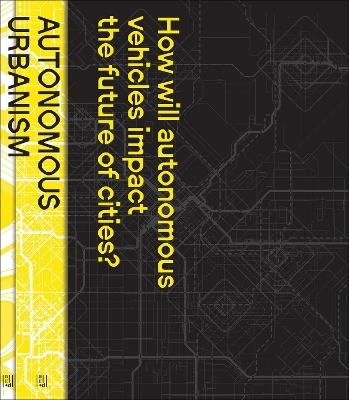
Autonomous Urbanism
Oro Editions (Verlag)
978-1-957183-63-3 (ISBN)
Automated vehicles (AVs) are beginning to appear on our roads. Their arrival represents the next disruptive technological innovation to our mobility systems. In a moment in which the contemporary conversation around driverless technology largely neglects its longer-term spatial implications, this book argues that AVs offer a major opportunity to rethink the design and evolution of our city’s built environments — with profound implications on urban life, infrastructure, and form since automobiles replaced horse-powered travel and changed the design of cities in the prior century. Driverless vehicles also carry with them however, the distinct risk to reinforce many of the negative externalities brought by 20th-century automobile-based urbanism including urban sprawl, mono-functional mobility infrastructures, traffic congestion, and environmental degradation. Instead, this book proposes a vision for our cities in which AVs have been used to spur a mobility paradigm shift from private automobile use towards automated mass transit and mobility as a service—using the city of Los Angeles as a testbed.
To take up these charges, this book is structured through two companion volumes: one that deploys the unique format of a graphic novel to depict a narrative experience of this future city through the eyes of the everyday public, and one that lays the framework for that speculative future to potentially occur, grounding it in our recent urban mobility history, transportation policies, and typological spatial implications at multiple scales. In envisioning this potential urban future and delineating the foundational design and policy steps towards achieving it, this book contends that there is hope in transitioning cities from the Autopias of today, to the Transitopias of tomorrow. This is a big shift. Are cities and their inhabitants ready?
Evan Shieh is an architect, urbanist, researcher, and educator. He is an assistant professor of architecture at New York Institute of Technology (NYIT) where he teaches as a full-time faculty member, and is also the director of Emergent Studio, a design and research office operating at architecture's intersection with urbanism, landscape, and infrastructure. Shieh is a graduate of Harvard University’s Graduate School of Design, from which he holds a Master of Architecture in Urban Design.
Volume 1
1 The Promises of Driverless Vehicles 011
2 A Historically-Informed Transportation Trajectory 027
3 An Automated Transit-Enabled Future 065
4 Values, Responsibilities, and Technological Intentions 093
5 Transportation Policies 123
6 A Prototype City: Los Angeles 141
Urban Spatial Implications by Scale 171
7 XL: Transportation Network Changes 179
8 L: Mobility Infrastructure Restructuring 195
9 M: Block-Scale Land Use and Density Transformations 255
10 S: Adaptive Conversion of Car-Centric Building Types 291
11 Paradigm Shifts 343
Acknowledgments 361
Bibliography 365
Volume 2
Prologue 007
1 A Reflection on the Medium of
World-Building 009
The Experience 023
2 Autonomous Transportation Mode Shifts 031
3 Multi-Modal Public Realm Transformations 045
4 Driverless Labor and Service Shifts 061
5 Automated Mobility-as-a-Service 075
6 Urban Infrastructure for Transit Equity 089
| Erscheinungsdatum | 13.11.2024 |
|---|---|
| Zusatzinfo | 300 Illustrations, color |
| Verlagsort | San Rafael |
| Sprache | englisch |
| Maße | 178 x 254 mm |
| Themenwelt | Naturwissenschaften ► Geowissenschaften ► Geografie / Kartografie |
| Technik ► Architektur | |
| Technik ► Bauwesen | |
| Technik ► Elektrotechnik / Energietechnik | |
| Technik ► Fahrzeugbau / Schiffbau | |
| ISBN-10 | 1-957183-63-2 / 1957183632 |
| ISBN-13 | 978-1-957183-63-3 / 9781957183633 |
| Zustand | Neuware |
| Haben Sie eine Frage zum Produkt? |
aus dem Bereich


